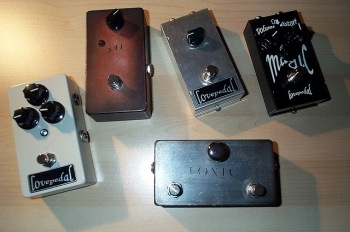How Overdrive Pedals Enhance Guitar Experience

The distorted sound commonly referred to as "overdrive" was discovered more or less inadvertently as guitarists cranked up their amps to achieve higher volumes during the early days of rock and roll. Since there were no solid state units at that time, turning amps to full volume would over drive the tubes and result in a different tone. This tone quickly became desirable and the need for overdrive effects pedals was created.
To ease the work, Overdrive pedals provide guitarists with a way to get a distorted tone that could otherwise be achieved only by turning a tube amplifier to full or near-full volume. Since it is not always feasible to play at this volume, effects pedals provide a viable alternative. Even tube amplifiers with output as little as five watts can be louder than necessary while practicing in the living room, especially if there are others in the household who would rather not be disturbed. In addition, it is difficult to get the natural overdriven tone from a solid state amp regardless of the volume. Hence, the need for an overdrive exists for many guitarists who want more than a basic clean sound while playing at low volumes.
Regardless of whether the high volume necessary to get the natural warm overdriven tone is an issue, delay pedals provide other distinct advantages, such as the ability to control the amount of overdrive at consistent volumes. While the control knobs present on these pedals can vary from brand to brand, they invariably provide adjustments for volume, tone, and overdrive level, even though they may not always be labeled as such. These controls allow for a variety of sounds from a single pedal. If the guitarist is playing a rhythm part with a clean setting on the amplifier but desires increased volume and an overdriven tone for solos, switching back and forth is as simple as pressing the on/off switch with the foot. A couple of turns on the knobs and the effects level can easily be increased or decreased, depending on the desired tone for a particular song.
For musicians who want to add a delay effect while keeping things fairly simple, the market offers combinations of delay pedals and overdrive pedals as a way to provide a combination of effects without necessarily resorting to a multi-effects pedal. While these units are popular and effective, they are a bit more difficult to program and are more expensive. This only results in wasted money for those who prefer only one or two effects. The tremolo controls on many vintage amps provide an effect similar to a delay and can be manipulated by adjusting the speed and intensity levels. For those who do not own a vintage amp, a delay pedal will provide a good alternative.
